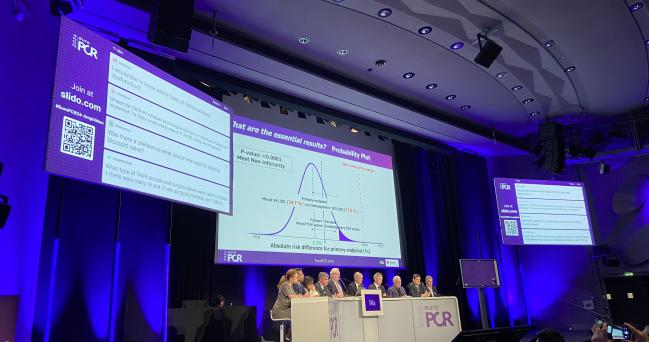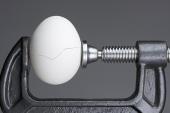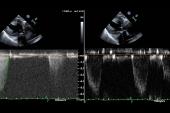Myval Matches Contemporary TAVI at 30 Days, but Do More Sizes Matter?
The Indian-made valve, available in nine sizes, still needs to deliver on outcomes in a randomized trial, experts agreed.

PARIS, France—Early results from a head-to-head comparison of an Indian transcatheter heart valve, available in twice as many sizes as other devices currently on the market, suggest that the Myval (Meril Life Sciences) prosthesis is noninferior at 30 days to those made by Medtronic and Edwards Lifesciences.
Whether a device that might be more easily tailored to patient anatomy will make a difference to long-term outcomes, however, remains unclear.
According to Patrick Serruys, MD, PhD (University of Galway, Ireland), who presented the LANDMARK trial here at EuroPCR Wednesday, having intermediate sizes available would allow operators to better fit devices to patients, potentially leading to better outcomes down the road.
“The availability of intermediate sizes enables precise and appropriate matching of a device to an individual patient anatomy,” Serruys said. “Continued follow-up out to 10 years will unravel whether the documented effective orifice area of the Myval series will have a beneficial impact on long-term patient prognosis and valve durability.”
Serruys told TCTMD that having novel devices like Myval vying for a spot on cath lab shelves will also help drive innovation, pointing to a paper published last month with the newest, fifth-generation Edwards device, the Resilia, featuring lower-profile sutures and a more streamlined mechanism for suspending the leaflets at the commissures. The 30-day mean effective orifice area (EOA) in Myval-treated patients in LANDMARK, he noted, was “very, very close” to that of patients treated with Resilia in this recent analysis. Designs like the Myval, he said, will inevitably spur larger companies to continue to evolve their products, with patients benefiting the most.
The availability of intermediate sizes enables precise and appropriate matching of a device to an individual patient anatomy. Patrick Serruys
Martin Leon, MD (NewYork-Presbyterian/Columbia University Irving Medical Center, New York, NY), the presentation’s discussant, offered a list of caveats that complicate the interpretation of the LANDMARK results at this early stage. He pointed out that the VARC-3 30-day safety endpoint chosen by the investigators was intended to “calibrate” device- and procedure-related safety against the benchmark of contemporary valves, not as a means of measuring clinical efficacy or valve-related performance.
As such, LANDMARK “should be viewed as an early step in the more rigorous comparison process of different TAVI systems,” Leon cautioned.
LANDMARK Results
The Myval was approved in India in 2018 and gained CE Mark in Europe in 2019, with the largest size cleared in 2020.
The LANDMARK trial randomized patients at 31 sites in 16 countries to one of seven Myval valve sizes or one of four Medtronic (Evolut R/Pro/Pro+/Flex) or Edwards Lifesciences (Sapien3/Ultra) valve sizes. In the Myval group, patients could be treated with devices measuring 20 mm, 21.5 mm, 23 mm, 24.5 mm, 26 mm, 27.5 mm, or 29 mm; those with anatomy best suited to 30.5 mm were entered into the single-arm XL Nested Registry.
At 30 days, the primary composite endpoint according to the VARC 3 definition—all-cause mortality, all-stroke, bleeding type 3 and 4, acute kidney injury stage 2-4, moderate or severe prosthetic valve regurgitation, new permanent pacemaker implantation, and major vascular complications—occurred in 24.7% of Myval patients and in 27.0% of patients treated with a commercially available valve, such that Myval met the criteria for noninferiority against the latter (P < 0.0002, using an upper one-sided 95% confidence interval).
No significant differences were seen across a host of secondary endpoints. Numerically, rates of bleeding type 3 and 4, as well as acute kidney injury, were more common among patients treated with the commercially available valves while rates of new permanent pacemaker and moderate valve regurgitation were numerically higher with the Myval devices.
An analysis of EOA measurements across the spectrum of valve sizes, with the sizes compared directly, suggested that Myval provides early hemodynamics roughly equal to other balloon-expandable devices and superior to the self-expanding valves.
In his remarks, Leon observed that it’s not yet clear whether having intermediate valve sizes proves important to long-term performance and durability—particularly if getting a good fit can be done by oversizing and postdilation—or whether other aspects of valve design, such as improved leaflet geometry, will prove key.
“I really believe we need to determine if the hemodynamic differences as seen by echo persist over time, and do they translate to either increased valve durability as assessed by changes in structural or hemodynamic valve deterioration, as well as improve clinical outcomes,” Leon said. “It’s not enough to just show the echo differences in the first 30 days.”
Myval, he noted, is being studied in the ongoing Compare-TAVI trial, against the balloon-expandable Sapien 3/Ultra valve.
It’s not enough to just show the echo differences in the first 30 days. Martin Leon
Also commenting on the trial for TCTMD, Philippe Pibarot, DVM, PhD (Laval University, Quebec City, Canada), was not convinced that better valve sizing would have an impact on echo gradients and mismatch. “It’s more, I think, the thickness of the leaflets, the thickness of the sutures, and eventually the supra-annular versus intra-annular design that may eventually have an effect of this early hemodynamics performance,” he predicted.
Moreover, early hemodynamics does not necessarily mean better long-term durability, Pibarot added, pointing to the oft-cited example of the Trifecta surgical valves (Abbott) which were removed from the market after demonstrating early structural deterioration. The Trifecta, he noted, “had excellent early hemodynamics with great gradients—they were actually promoted on the basis of the gradients and hemodynamics and low rate of mismatch. Even me, I was very enthusiastic when I saw the Trifecta, but we all know how the story ended.”
Lastly, Pibarot took issue with the valve EOA comparison, noting that different device types are sized differently. An apples-to-apples comparison, he said, would be based on the patient’s own annulus area, not the valve annulus size.
Fitting Into Practice
Speaking during the sessions, Sengottuvelu Gunasekaran, MBBS, MD (Apollo Hospitals, Chennai, India), who has used the Myval in practice, said he and his colleagues “have found it extremely useful, particularly in complex anatomy like bicuspid, because the sizing and the acute complications are relatively low.” As might be expected with a wider range of valve sizes, rates of paravalvular leak are “very low,” he added, and thanks to the wide stent frame and short frame height, “coronary access is not an issue with these valves.”
But how new devices like Myval might ultimately fit into a practice for physicians elsewhere in the world, who are already familiar with one or both of the two ubiquitous brands, is unclear.
“To master more than two or three valves for an operator is something very, very difficult in [terms of] the selection and the choice,” Serruys acknowledged. “Institutions who do more than a thousand valves per year . . . they have the feeling for this valve to be better for that subset of patients.” By contrast, “the individual who is doing 100, 150 valves per year: it's better to stick, probably, to one technology that they master. You could see the learning process in all these trials when you introduce a new device.”
Asked how he might decide to use the Myval, were it approved in Europe, Serruys said: “We have to see the long-term follow-up, but I think . . . that an effective orifice area which is superior is probably impacting on durability and long-term outcomes.”
One other factor might play a role, depending on how this device fares in regulatory decision-making around the world. The design paper for the LANDMARK trial, published in February 2021, notes that at that time, the valve was intended to be “cost competitive” with the Medtronic products and “more affordable” than the Edwards line.
Shelley Wood was the Editor-in-Chief of TCTMD and the Editorial Director at the Cardiovascular Research Foundation (CRF) from October 2015…
Read Full BioSources
Serruys P. Early outcomes of a randomized non-inferiority trial comparing TAVI devices: the LANDMARK trial. Presented at: EuroPCR 2024. May 15, 2024. Paris, France.
Disclosures
- Serruys reports consulting payments from SMT, Novartis, Meril Life Sciences, Xeltis, and Philips.
- Leon reports consulting relationships with Anteris, Croivalve, Foldax, Medinol, Mirus, Picardia, SoloPace, Valve Medical, Xenter MD, and serving as the principal investigator for the PARTNER trials.
- Gunasekaran reports honoraria/consulting for Abbott, Boston Scientific, Meril, and Translumina.
- Pibarot reports honoraria/consulting for Edwards Lifesciences, Medtronic, and PiCardia.





Comments